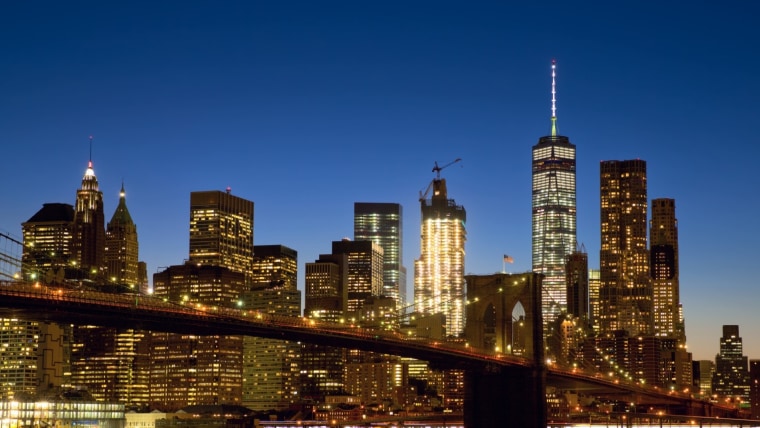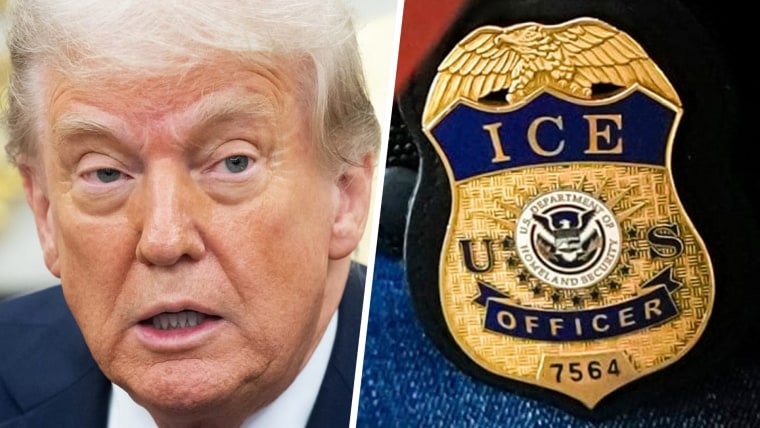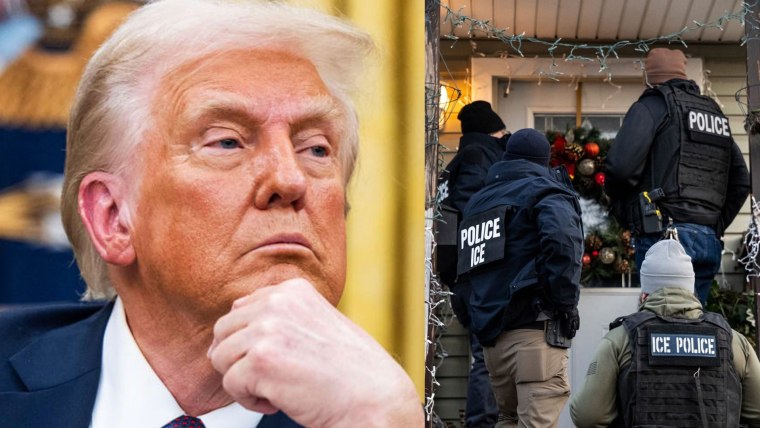This Monday, President Donald Trump issued yet another executive order, this one titled “Strengthening and Unleashing America’s Law Enforcement to Pursue Criminals and Protect Innocent Citizens.” As the ominous “unleashing” in the title makes clear, the order’s proposals, like so many “tough-on-crime” approaches, are far more about indulging in cruel punitiveness than in actually reducing crime.
This executive order is about retaliation, punishment and brutality.
The order's opening line makes it clear that safety is not actually the goal. “Safe communities,” it says, “rely on the backbone and heroism of a tough and well-equipped police force.” While data, like that in a recent study, “Police Force Size and Civilian Race,” makes it clear that policing can help reduce crime, literature reviews such as those produced by the Campbell Collaboration also make it clear that aggressive tactics are unhelpful if not actually counterproductive — as shown in a 2024 paper, “The effects of hot spots policing on violence: A systematic review and meta-analysis."
Moreover, it is increasingly apparent that nonpolice interventions can also significantly reduce crime, quite likely more effectively than policing, with additional social benefits and far fewer social costs.
In other words, this executive order is about retaliation, punishment and brutality. It is wrapped in the veneer of “public safety,” but pushes policies that are often least likely to produce actual safety.
The order appears to have two goals.
The first half is about politics and messaging. It’s an effort to wrest back the narrative about criminal legal reform in support of those who fly Blue Lives Matter flags and instructs the attorney general to do some things she lacks the legal authority to do.
The second — and more troubling — half is about policy. It lays out more viable routes Trump may use to cripple reform efforts, although its generic language makes it hard to pin down precisely what it is threatening.

The political message of the first half is clear: It argues that the proper way to fight crime is to empower legally unaccountable police to use harsh, aggressive tactics to ramp up the number of people in prison. These tactics may not advance public safety, but they are satisfying ways to exert control over disliked groups.
The order starts by instructing the attorney general to create a mechanism to ensure that police officers are indemnified when “unjustly” sued — something that is basically not needed. A majority of states already have laws indemnifying police officers, and a study in the New York University Law Review of 45 major police departments found that officers were indemnified in 99.98% of the judgments against them.
This is about messaging, not policy, and the message is “police should not be sued, and we stand behind those who are.”
What follows in the order are proposals — most of which are outside what the president can do via an executive order, such as using federal resources to increase police officer pay, strengthen legal protections for the police, seek enhancement punishments for those who harm police, and invest in the security and capacity of prisons.
The message is ‘police should not be sued, and we stand behind those who are.’
In almost all cases, federalism rules prevent Trump from directly telling local governments how to do these things. The feds can try to nudge states via incentive grant programs, but historically states have often been relatively unmoved by such programs, and, other than currently appropriated discretionary funds, the funding would have to come from Congress (despite Trump’s fight to get more power of the purse).
But like with indemnification, the point here is less about the policy specifics and more about using the presidential bully pulpit to place police at the center of how we think about public safety, and to provide moral (if not financial) support for traditional aggressive styles of law enforcement.
The second part of the order, parts 4 to 6, focuses more on actual policies that the Trump administration may be able to use to subvert reforms and entrench traditional, aggressive policing.
Part 4 first seeks, at a minimum, to ramp up the infamous 1033 program, which funnels retired military gear to local police departments — it’s how the Los Angeles school district ended up with grenade launchers. (It talks of sharing “assets,” though what those assets are is unstated, and the legal pathway to sharing them is unclear.)
The second section of part 4 is the one that has alarmed people the most, but perhaps not for the right reasons. This part calls on the attorney general and the secretary of defense to “determine how military and national security assets, training, non-lethal capabilities, and personnel can most effectively be utilized to prevent crime.”

This has raised the specter of Trump using the Insurrection Act to circumvent the Posse Comitatus Act (which generally forbids federal troops from engaging in police activity) to use the military to crush protests.
Which is definitely possible!
The federal response to protests in Trump’s first administration were often heavy-handed, and Trump’s then-defense secretary, Mark Esper, indicated that Trump wished the response had been more violent still (section 6 of the order, urging greater use of Homeland Security Task Forces, also points in this direction). But military tanks on the streets is an escalation that the military itself may resist and that would likely engender significant public pushback.
Jess Pishko, a journalist whose beat is conservative sheriffs, has pointed to a different, and more insidious, possible goal here, one whose invisibility may make it harder to resist: a massive increase in surveillance, by linking the police and national security resources, and by expanding law enforcement’s access to intelligence gathering resources. This sort of behind-the-scenes collaboration can greatly expand the reach of law enforcement, but in a way far less likely to spark political resistance than the 101st Airborne marching down Main Street.
The last key part of the order, section 5, points to another angle Trump may hope to use: directing the DOJ to charge and sue reformers.
The point here is less about the policy specifics and more about using the presidential bully pulpit to place police at the center of how we think about public safety.
The first part of section 5 appears to threaten reform politicians by seeking to file federal criminal charges against anyone who obstructs law enforcement from carrying out their duties (although what those charges could be is somewhat unclear). The language is confusing, so it may also just be saying that when reformers refuse to make arrests or file charges, the feds will step in when they can to do so themselves. (The overall tenor of the order, though, seems to caution against assuming the less-harsh perspective.)
Perhaps more significant is the second part of section 5, which suggests that Trump also plans to use the civil rights “pattern or practice” lawsuits that the Obama and Biden DOJs filed to target abusive police departments to target reformers instead. Their less-punitive practices, the argument goes, are in fact the real source of discrimination and civil rights violations. This could, among other things, result in local reformers getting pushed into consent decrees with the feds that significantly limit their discretion.
All told, the order represents a serious effort to roll back reforms, both directly (by supplying military gear and by threatening reformers with criminal and civil investigations) and indirectly (by forcefully asserting the tough-on-crime perspective that law enforcement should be encouraged to act aggressively while remaining almost entirely free of any meaningful oversight).
It is not a recipe for actual public safety. But it is one for oppressive cruelty and retribution.

